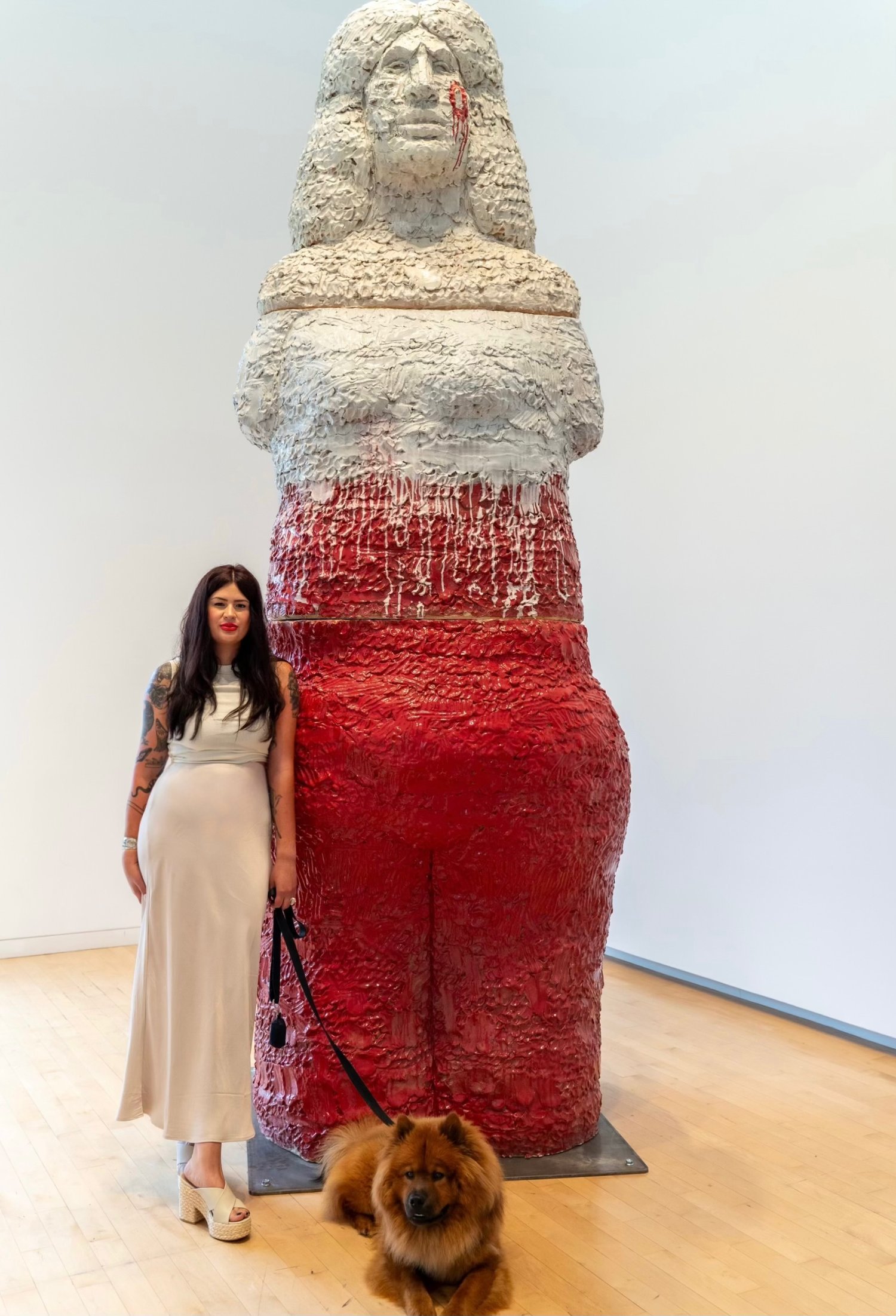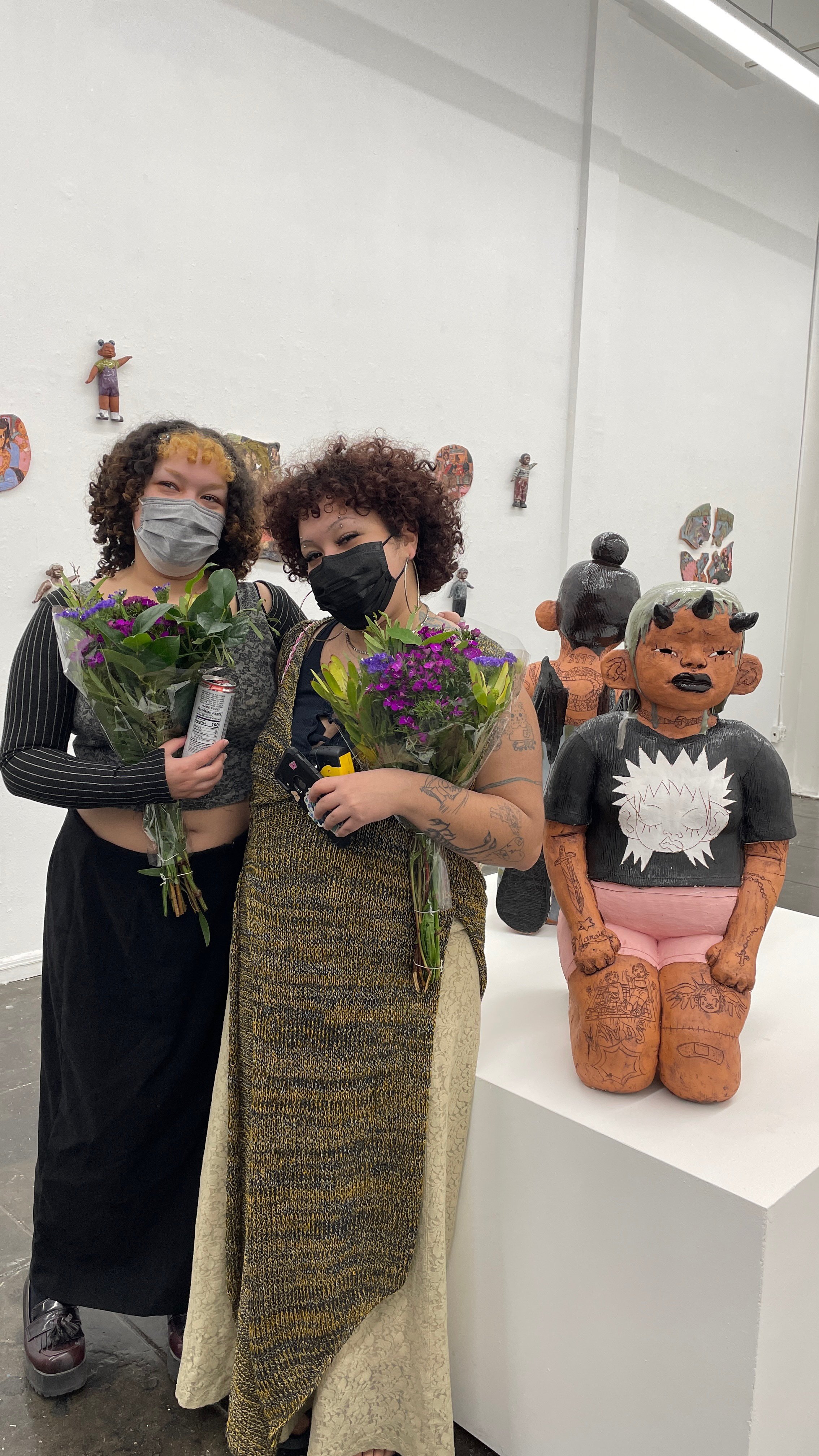Gibson was born in 1972, Colorado, USA and he currently lives and works in Hudson Valley, New York.
The artist combines intricate indigenous artisanal handcraft – such as beadwork, leatherwork and quilting – with narratives of contemporary resistance in protest slogans and song lyrics. This “blend of confrontation and pageantry” is reinforced by what Felicia Feaster describes as a “sense of movement and performance as if these objects ... are costumes waiting for a dancer to inhabit them.” The artist harnesses the power of such materials and techniques to activate overlooked narratives, while embracing the presence of historically marginalised identities.
Gibson explains: “I am drawn to these materials because they acknowledge the global world. Historically, beads often came from Italy, the Czech Republic or Poland, and contemporary beads can also come from India, China and Japan. Jingles originated as the lids of tobacco and snuff tins, turned and used to adorn dresses, but now they are commercially made in places such as Taiwan. Metal studs also have trade references and originally may have come from the Spanish, but also have modern references to punk and DIY culture. It’s a continual mash-up.”
Acknowledging music as a key element in his experience of life as an artist, pop music became one of the primary points of reference in Gibson’s practice: musicians became his elders and lyrics became his mantras. Recent paintings synthesise geometric patterns inspired by indigenous American artefacts with the lyrics and psychedelic palette of disco music.
Solo exhibitions include ‘THE SPIRITS ARE LAUGHING’, Aspen Art Museum, Colorado (2022); ‘This Burning World’, Institute of Contemporary Art, San Francisco, California (2022); ‘The Body Electric’, SITE Santa Fe, New Mexico (2022) and Frist Art Museum, Nashville (2023); ‘INFINITE INDIGENOUS QUEER LOVE’, deCordova Sculpture Park and Museum, Lincoln, Massachusetts (2021); ‘To Feel Myself Beloved on the Earth’, Benenson Center, Art Omi, Ghent, New York (2021); ‘When Fire is Applied to a Stone It Cracks’, Brooklyn Art Museum, Brooklyn, New York (2020); ‘The Anthropophagic Effect’, New Museum, New York City, New York (2019); ‘Like a Hammer’, Madison Museum of Contemporary Art, Madison, Wisconsin (2019); Seattle Art Museum, Seattle, Washington (2019); Mississippi Museum of Art, Jackson, Mississippi (2019); Denver Art Museum, Denver, Colorado (2018); ‘This Is the Day’, Blanton Museum of Art, Austin, Texas (2019); Ruth and Elmer Wellin Museum of Art, Clinton, New York (2018) and ‘Love Song’, Institute of Contemporary Art, Boston, Massachusetts (2013). For the Toronto Biennial 2022, Gibson presented an evolving installation featuring fifteen moveable stages at Museum of Contemporary Art Toronto, Ontario, Canada. Other recent group exhibitions include ‘Dreamhome’, Art Gallery of New South Wales, Sydney, Australia (2022); ‘Crafting America’, Crystal Bridges, Bentonville, Arkansas (2021); ‘Monuments Now’, Socrates Sculpture Park, Queens, New York (2020); ‘Duro Olowu: Seeing Chicago’, Museum of Contemporary Art, Chicago, Illinois (2020) and The Whitney Biennial, Whitney Museum of American Art, New York City, New York (2019). Works can be found in the collections of Denver Art Museum, Denver, Colorado; Eiteljorg Museum, Indianapolis, Indiana; High Museum of Art, Atlanta, Georgia; Museum of Fine Arts, Boston, Massachusetts; The Museum of Modern Art, New York City, New York; National Gallery of Canada, Ottawa, Canada; Rose Art Museum, Brandeis University, Waltham, Massachusetts; San Francisco Museum of Modern Art, San Francisco, California; Seattle Art Museum, Seattle, Washington; Smithsonian Institution, Washington, DC and Whitney Museum of American Art, New York City, New York, amongst others. Gibson is a recipient of numerous awards, notably a MacArthur Foundation Fellowship (2019), Joan Mitchell Foundation, Painters and Sculptors Grant (2015) and Creative Capital Award (2005).














